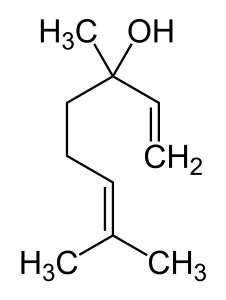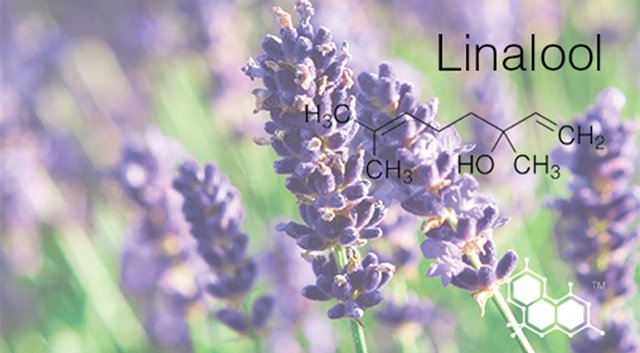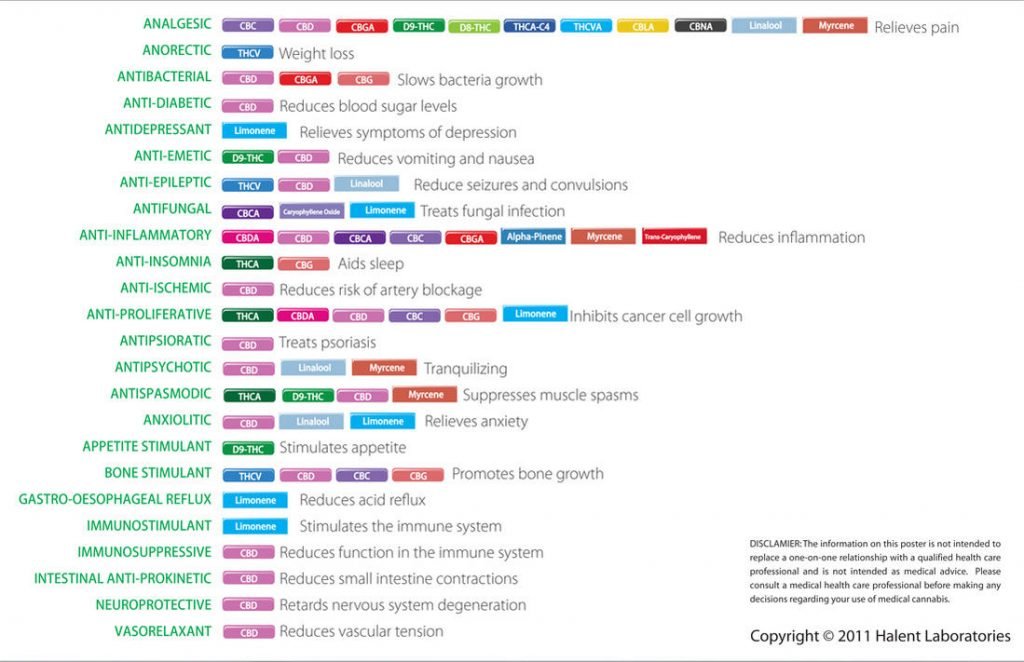Terpene Profile: Linalool
Formula: C10H18 O
Molecular Mass: 154.24932 g/mol
Boiling Point: 198 °C (388.4°F)
LD50 (Lethal Dose): Currently Unknown for humans, LD50 = 3g/kg for mice (Compare to Nicotine: for mice – 3mg/kg, for humans – 40–60 mg/kg)
Up until now of these profiles have focused specifically on cannabinoids; this post will be the first that shifts the focus to the larger discussion of terpenoids and terpenes. Cannabinoids are a class of terpenophenolic compounds, part terpenoid and part phenol. While terpenes are hydrocarbon groups created by various combinations of the isoprene units that make them up, and may be aromatic, all phenols are aromatic hydrocarbons, which means they have a very pronounced scent. Terpenoids are compounds related to terpenes but may also include oxygen or have molecules rearranged; the terms are often used interchangeably. Cannabinoids, being half terpene and half phenol, have very pronounced scents and flavors. The different combinations of terpenes and cannabinoids found in cannabis are what give strains their distinct flavors and scents, as well as their medicinal properties.
In this first terpene profile we’ll discuss linalool, a common terpene in cannabis although best known for giving lavender its distinct scent and flavor. Linalool is also often used in aromatherapy as a sleep aid, a relaxant and as a treatment for anxiety for thousands of years. Linalool is crucial in the production of Vitamin E in the body, which makes it a very important terpene for healthy functioning.
Connection to GDP
As stated, linalool is a common terpene found in cannabis. Some laboratory tests show elevated levels of linalool in Grand Daddy Purple, Ken’s GDP, and other purple strains. Laboratory testing shows that not all samples test high in linalool. The Medical Marijuana Handbook co-authored by cannabis guru Ed Rosenthal relates that sampled GDP “contained significant amounts of pinene, limonene, borneol, and moderate levels of myrcene and terpenol.” Perhaps the production of linalool is dependent on the phenotype of the strain or some other factor; until more research is done this will remain unknown.
 Therapeutic Uses
Therapeutic Uses
- Analgesic – Relieves pain.
- Antidepressant – Relieves symptoms of depression.
- Anti-Epileptic – Reduces seizures and convulsions.
- Anti-Inflammatory – Reduces inflammation.
- Antipsychotic – Tranquilizing effects relieve symptoms of psychosis.
- Anxiolytic – Relieves anxiety[? – More research is needed; see below – Ed.]
- Sedative – Promotes sleep.
Credit: Mitchell Colbert at Leaf Online.


